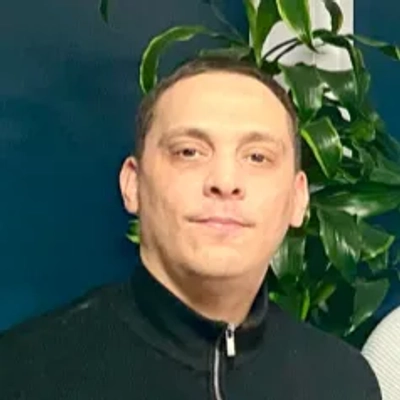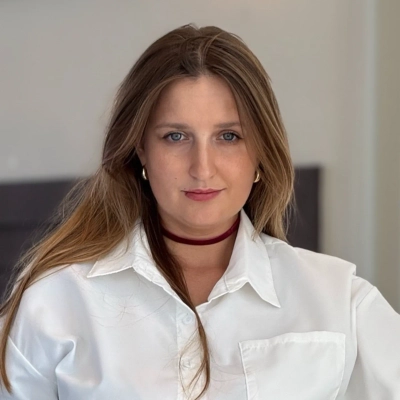How Do You Balance Personal Creative Expression With a Client Brief?
Striking the perfect balance between personal creativity and a client's brief can be a tightrope walk for any professional. This article distills expert advice on navigating this complex terrain, offering actionable insights into aligning artistic vision with client objectives. Discover strategies to enhance and amplify a client's message, while infusing individual artistry, to deliver beyond expectations.
- Align Vision With Purpose
- Blend Artistry With Technical Demands
- Understand Core Objectives
- Enhance Client's Message
- Solve Problems With Creativity
- Refine Bold Ideas
- Communicate And Adapt
- Amplify Client's Message
- Immerse In Client's Brief
- Align Vision With Objectives
Align Vision With Purpose
Balancing personal creativity with a client's goals comes down to aligning vision with purpose. I think of it like repainting action figures-I might have wild ideas for a new color scheme, but if the client wants their figure to stay true to a specific franchise, my creativity needs to enhance that vision, not overshadow it. For instance, when I worked on a custom repaint of a superhero figure, I suggested subtle shading techniques to add depth without straying from the original design. It felt rewarding to push my skills while delivering exactly what the client wanted-personal touches that elevate their vision.

Blend Artistry With Technical Demands
Balancing my creative expression with clients' strategic goals is essential in the fine art printing business. With over 15 years of experience, I've mastered how to blend an artist's vision with the technical demands of high-quality reproduction. At Prints Giclée Shop, we ensure that the aesthetic integrity of an artwork remains intact while achieving the precise color accuracy our clients demand.
A specific instance where this balance was key is when we collaborated with a prominent gallery on a limited edition print series. The gallery had specific thematic concepts they wanted to convey, but ensuring that each print captured the artist's unique style and colors was crucial. By working closely with the artist during the proofing process, we aligned our print quality to the client's vision, resulting in a successful collection that improved both the gallery's branding and the artist's market presence.
These projects require understanding both creative artistry and technical execution. By listening to our clients and incorporating their objectives into our processes, we achieve not only the aesthetic they envision but also the strategic impact they aim for. This approach has cemented us as a trusted partner in the arts community, accommodating creativity while fulfilling client briefs effectively.

Understand Core Objectives
Balancing personal creative expression with the strategic goals of a client's brief is always a delicate act, but I've found that it's all about understanding the core objectives of the client while also injecting creativity that aligns with those goals. The key is to approach each project with an open mind, ready to interpret the brief in a way that is both true to the client's vision and allows for innovative design.
For example, we recently worked on a rebranding project for an e-commerce client that sold eco-friendly home products. The client's brief was clear—they wanted to retain their audience but also appeal to a younger demographic, with a fresh and vibrant look that emphasized sustainability. At the same time, they were looking for something unique that would stand out in a crowded market.
In this case, my personal creative expression played a role in developing a modern, minimalist aesthetic that incorporated nature-inspired elements, like organic shapes and earthy tones, without feeling overly cliché or predictable. I knew the branding needed to feel both fresh and eco-conscious, so I drew on my experiences with nature-based design themes but kept the visual elements simple and clean to match the brand's ethos. By incorporating elements that spoke to sustainability—like a natural color palette and eco-friendly imagery—while keeping the design approachable for a younger audience, we were able to hit both the client's strategic goals and add a layer of personal creativity.
The result was a brand identity that was both aligned with the client's mission and values but also stood out in the marketplace. It allowed for creative freedom without sacrificing the strategic message. After the rebrand was launched, the company saw a 20% increase in online sales from the younger demographic they were aiming to target, and their overall brand perception improved significantly.
The takeaway is that, as a designer, when you can merge personal creativity with the client's strategic objectives, you create something truly impactful. Understanding their needs and goals ensures the final product not only reflects your creative style but also serves a clear purpose that drives success.

Enhance Client's Message
Balancing personal creative expression with the strategic goals of a client's brief can be a delicate dance. As a designer, it's crucial to stay true to your own creative instincts while ensuring that the work aligns with the client's vision, objectives, and target audience. The key is to find a sweet spot where your creativity enhances the client's message without overshadowing their goals.
I find it helpful to approach the project with curiosity and a collaborative mindset from the start. Instead of seeing the brief as a set of constraints, I view it as a foundation that offers clarity on what the client values and what their vision is. It's then my job to build on that foundation with innovative, visually compelling solutions that still respect the strategic goals.
For example, I worked on branding for a tech startup that had a very specific brief-convey cutting-edge innovation while maintaining an approachable, human feel for their young, diverse audience. Initially, I was drawn to bold, abstract, futuristic designs, but after more discussions with the client, I realized the importance of blending that futuristic edge with a sense of warmth and accessibility. Instead of creating something cold and complex, I used modern typography and clean lines, but paired it with softer colors and organic, rounded shapes to give it a welcoming tone.
By merging my personal design aesthetic with the strategic elements of the brief, the final result felt both fresh and aligned with the company's mission. The client appreciated how their brand felt innovative yet approachable, and the audience resonated with the balance of boldness and warmth. It was a reminder that creativity doesn't always mean pushing boundaries in a way that's disconnected from the goal: it's about using your unique perspective to find innovative solutions that serve a larger purpose.

Solve Problems With Creativity
Balancing creative expression with a client's strategic goals means using creativity to solve their problem, not just showcase your style. For example, while designing a logo for a tech startup, I initially leaned toward bold, experimental typography. However, the brief emphasized trust and professionalism to attract investors, so I shifted to clean, minimal design with a modern sans-serif font and subtle color gradients. This still allowed room for creativity within the constraints. The result was a design that aligned with their goals while feeling unique and visually engaging. Always let the client's objectives guide your creative choices—personal expression should enhance, not overshadow, the message.

Refine Bold Ideas
For me personally, the challenge often lies in knowing when to refine bold ideas to ensure they serve the client's goals. During a campaign for a retail client, our team initially pitched a concept that was visually striking but lacked a clear call to action. By revisiting the brief and refocusing on the primary objective—driving in-store visits—we adjusted the design while keeping the creative essence intact. The campaign ultimately led to a 22% increase in foot traffic during its first week. I think the best results come from finding that sweet spot where creativity elevates the message without overshadowing the client's purpose.

Communicate And Adapt
Balancing personal creativity with a client's strategic goals requires clear communication and flexibility. I once worked with a client who wanted a bold, modern logo for their law firm but also needed it to reflect professionalism and trustworthiness. While I initially envisioned something more abstract, I quickly realized their audience valued tradition. I combined my creative ideas with classic design elements, like clean lines and balanced symmetry, to meet their goals. The result was a logo that looked fresh but still respected the industry's expectations. This taught me to listen closely and adapt while finding space for my own creative input. The key is understanding the client's priorities and shaping your creativity around them.

Amplify Client's Message
Balancing personal creative expression with a client's strategic goals starts with fully understanding the brief. The key is to view creativity as a tool to amplify the client's message rather than overshadow it.
We ensure our work aligns with their target audience, brand identity, and objectives while leaving room for innovative ideas that add value.
For example, when designing a logo for a healthcare brand, the brief emphasized trust and professionalism. While adhering to these goals, we added a personal touch by incorporating a subtle, abstract heart in the design to evoke warmth and care.
The final product honored the client's direction while making the brand visually distinct and emotionally resonant. This approach allows creativity to complement the brief rather than compete with it, ensuring both artistic satisfaction and client success.

Immerse In Client's Brief
As a design professional, balancing personal creative expression with a client's strategic goals is essential for delivering impactful work. I approach this by first immersing myself in the client's brief, understanding their objectives, target audience, and brand identity. This foundation allows me to align my creative vision with their strategic needs.
For example, while working on a branding project for a sustainable fashion brand, I was passionate about using bold, vibrant colors to reflect their eco-friendly ethos. However, the client's goal was to appeal to a more minimalist audience. I found a middle ground by incorporating subtle, earthy tones into a clean, modern design that still showcased my creative flair.
This approach not only met the client's strategic goals but also allowed me to express my style, resulting in a brand identity that resonated with their audience while remaining true to my artistic vision. Balancing these elements ultimately leads to more successful and satisfying outcomes.

Align Vision With Objectives
Balancing personal creative expression with a client's strategic goals comes down to aligning your vision with their objectives. The key is listening to their needs and understanding their target audience. You can still bring your personal style to the table, but it's about finding that sweet spot where your creativity supports their brand message and drives results.
In my experience, working at Rathly taught me that results are driven by what resonates with the customer, not what looks great in a portfolio. Sometimes it's about making small tweaks to your original ideas, while keeping the client's goals front and center. Focus on simplicity and clarity, and don't be afraid to test ideas to see what really works.


